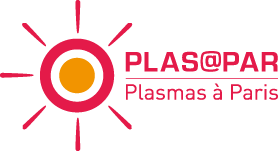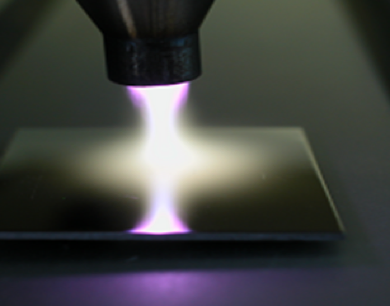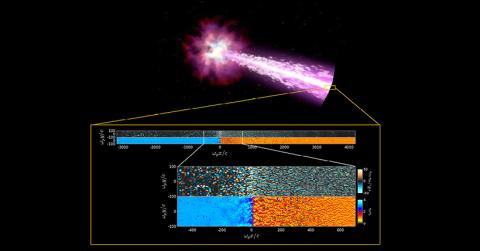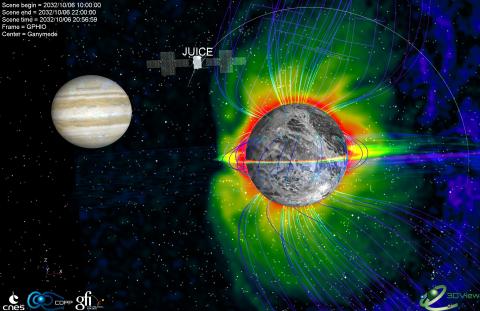
Who am I ? n°1
Meet a member of the PLAS@PAR Federation.
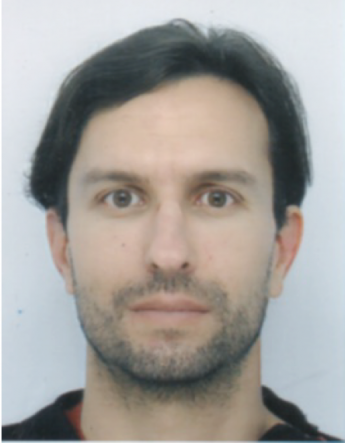
The riddle
- I am ... a numerical physicist.
- I'm studying ... space plasmas.
- If I were a plasma, I would like to be ... a planetary magnetosphere.
- If plasmas were a work, it would be ... a poster by Steve Thomas (https://www.stevethomasart.com/spacetravel), if not David Bowie - Life on Mars.
- If plasmas were a color, it would be ... red (like Mars).
- If plasmas were a sport, it would be ... a basketball / rugby / football team sport (the behavior of which together modifies individual actions and vice versa).
The interview
Hi Ronan Modolo, you are now unmasked! Can you tell us a little more about your background?
I did my thesis at CETP (Center for the Study of Terrestrial and Planetary Environments) under the supervision of Gérard Chanteur on the modeling of solar wind-Mars and kronian plasma-Titan interactions (2001-2004). After a year as an ATER at UVSQ (University of Versailles Saint-Quentin-en-Yvelines), I benefited from a post-doc at the Swedish Space Physics Institute –Uppsala, then at the University of Iowa, to work on data from Cassini and Mars-Express probes, in particular on measurements from a Langmuir probe and an ionospheric radar. Since 2008, I have been MCF (lecturer) at UVSQ and LATMOS (Atmospheres, Environments, Space Observations Laboratory) and I continue my activities related to space missions.
Can you say a little more about your current research in plasma physics?
All objects in the solar system are immersed in a non-collisional plasma which interacts with them transferring a significant part of its momentum and energy to their atmosphere. This transfer is particularly effective for weakly magnetized objects (Mars, Venus, Titan and comets) and for objects with a very confined magnetosphere (Mercury, Ganymede, etc.). This interaction contributes to the erosion of these gaseous envelopes and participates in atmospheric dynamics.
I focused on the study of plasma-neutral interactions in the planetary environments of these objects using two means of study: a component of modeling and numerical simulation, and a component of spatial data analysis, in support of space missions in operation or in preparation.
To explore planetary plasma environments, click here!
Image: The plasma environment of Ganymede (foreground), a moon of Jupiter (background), illustrated by the LatHyS model where the section planes represent the electron density of the plasma and the magnetic environment illustrated by the field lines magnetic connected to the moon.
Credit: CNES / CDPP / GFI / LATMOS
Can you share with us the references of your latest publications?
- Modolo et al, 2018, The LatHyS database for planetary plasma environment investigations: Overview and a case study of data / model comparisons, Planetary and Space Science, doi: 10.1016 / j.pss.2017.02.015
- Romanelli et al, 2018, Responses of the Martian Magnetosphere to an Interplanetary Coronal Mass Ejection: MAVEN Observations and LatHyS Results, Geophysical Research Letters, doi: 10.1029 / 2018GL077714
- Leclercq et al, 2016, 3D magnetospheric parallel hybrid multi-grid method applied to planet-plasma interactions, Journal of Computational Physics, doi: 10.1016 / j.jcp.2016.01.005
Can you tell us a little more about the teaching actions you lead?
As a lecturer, I teach courses covering the Bachelor and Master cycles. I take part in the physics teaching in Bachelor (optics, electrokinetics, mechanics,…) but also in scientific calculation and numerical methods and Practical work in physics of space plasmas. For several years, I have focused my activity on teaching in Bachelor and more particularly in the first year with the participation and the setting up of support systems for success (improvement of the transition from high school to university, diversification of teaching methods, upgrading for students in difficulty, exploitation and development of digital resources,…). As a head of a physics degree, I support undergraduate students in their career path and the construction of their further studies.
What site(s) do you work on?
I am « multi-site » with teaching activities and pedagogical responsibility that take place on the campus of the UFR of Sciences of the UVSQ in Versailles, and research activities distributed between the Guyancourt site of the OVSQ (Versailles Saint-Quentin Observatory) and the Pierre et Marie Curie campus of Sorbonne University (with a main place in Jussieu where the rest of the plasma-neutral interaction team is located).
What is your role within the PLAS@PAR community?
LATMOS is one of the newcomers who have joined the Federation. My goal is to consolidate links between our team and the space plasma laboratories and to establish new collaborations around microphysical processes (ionization, collisions) and the development of digital tools. I also want to get involved in teaching and popularization actions. I participate in the council of PLAS@PAR.
Can you explain to us the actions you take with the general public?
I participate on an ad hoc basis in communication, animation and scientific outreach actions to the general public and schools. This is done in different forms:
- General public conference as part of the Science Festival
- Photo exhibition (ex: Exploration of the solar system: from space to digital at the Saint-Quentin media library)
- Visits and activities in primary schools
- Participations in the "Ropes for success" (Animation with license trainees at the Pasteur college in Mantes-la-Joly, conference for college students)
- Participation in hosting college interns at LATMOS
- Press Releases
- etc.
If PLAS@PAR faces a challenge for the next 5 years, what do you think it is?
There are many challenges, but if I can only name one, I would say to increase the visibility of our research activities among the general public and students. The Labex PLAS@PAR has made it possible to set up a large number of structuring actions of scientific mediation which must be perpetuated and enriched.
One last word ?
I am very happy to have been able to join the Federation and to be able to benefit from the wealth of collaborations of the network. I look forward to participating in the interdisciplinary, educational and visibility actions of our community.
Thank you very much Ronan Modolo! Who's next ?
